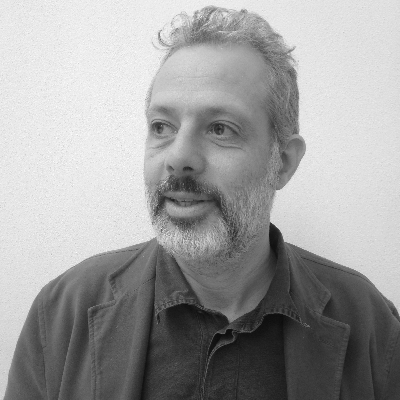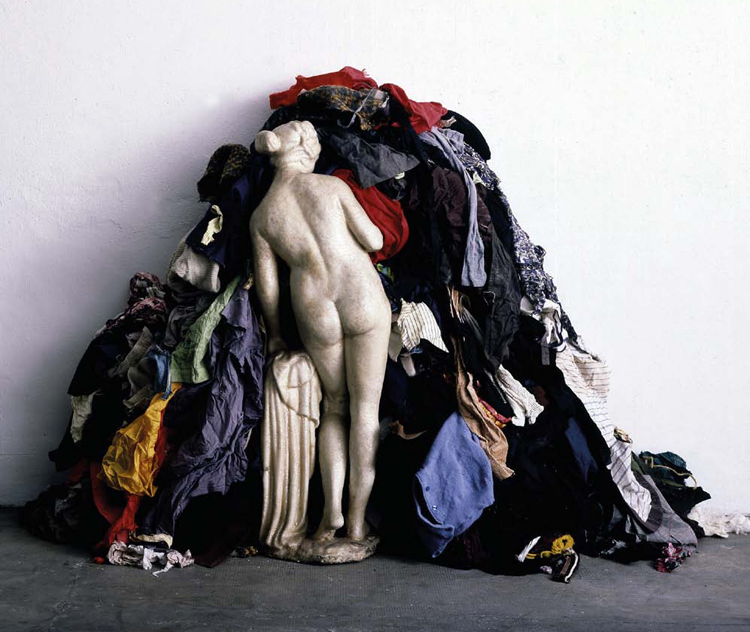 |
|
Michelangelo Pistoletto, Venus of the Rags, 1967 - Photo: Paolo Pellion |
In 2012, at Venice Architecture Biennale, Pistoletto exhibited his work Recycled Italy, made entirely with the waste produced for the Biennale’s installations. The same year he promoted Rebirth-Day, the first universal day dedicated to rebirth, which inspired over one hundred events the world over on 21st December.
In 2013, the Louvre in Paris hosted his personal exhibition Année 1 – Le Paradis sur Terre and the same year in Tokyo he was awarded the Praemium Imperiale for painting.
 |
|
Michelangelo Pistoletto, Année 1 – Le Paradis sur Terre, 2013, Louvre Museum, Paris. |
In May 2015, Milan will exhibit in Piazza del Duomo, to coincide with Expo 2015, a new work by Pistoletto, showing an eight-metre high bitten and reintegrated apple in the middle of the “Third Paradise”, a new infinity symbol, materialized on the ground by straw bales forming a session, to communicate the possible harmony between nature and artifice.
According to the author (The Third Paradise Manifesto, 2003-2015), “The project of the Third Paradise involves leading artifice, that is science, technology, art, culture and politics to restore life to earth together with the commitment to re-establish common principles and ethical behaviour since the real success of this objective depends on them. Third Paradise means moving towards a new level of planetary society, essential to guarantee humankind’s survival”.
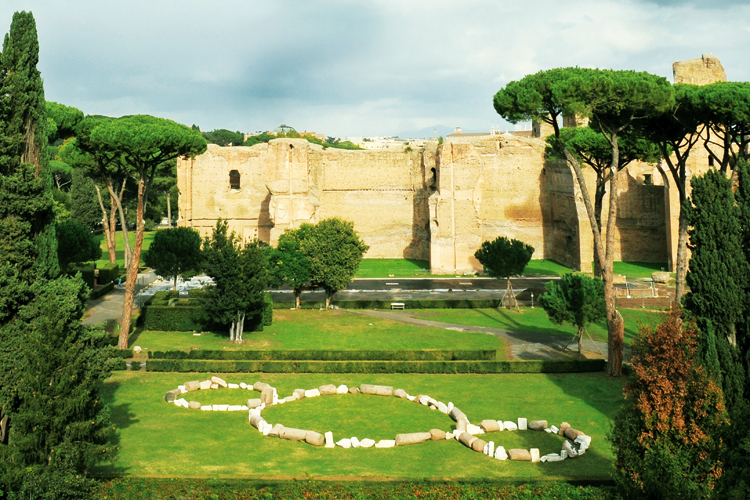 |
|
Michelangelo Pistoletto, Caracalla, Contemporary Paradise, 2012, Baths of Caracalla, Rome - Photo: Pierluigi Di Pietro |
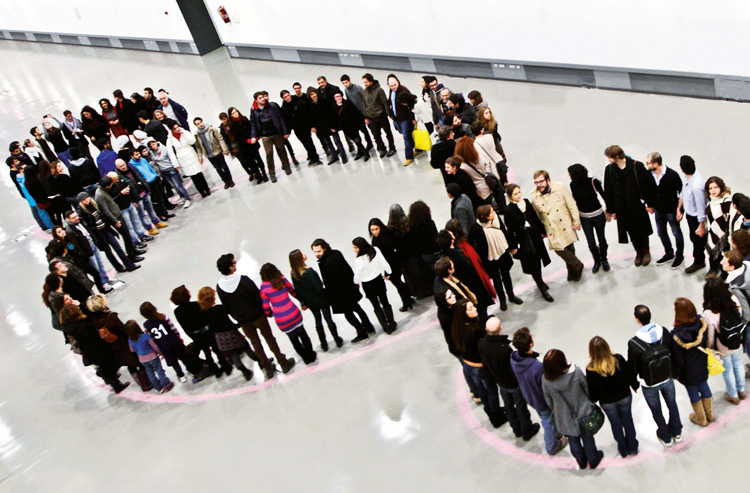 |
|
Rebirth-day, 2012, Zisa Zona Arti Contemporanee, Palermo - Photo: Domenico Aronica |
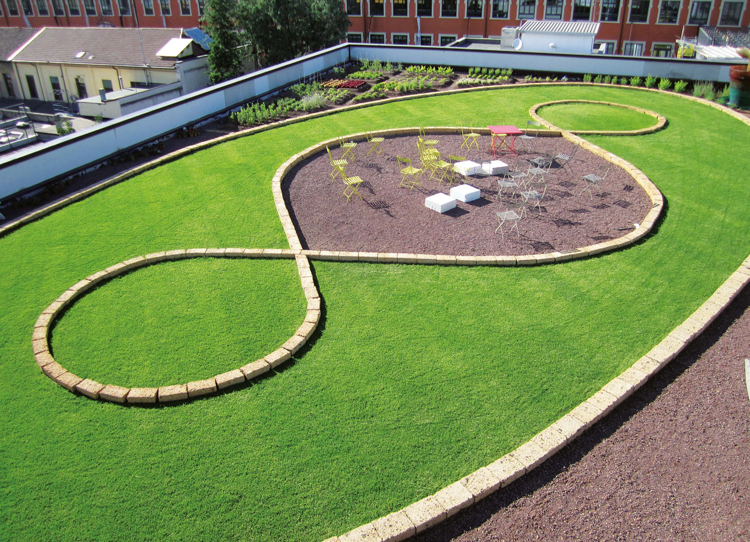 |
|
The Third Paradise – Cultivating the City, 2014 SuperOrtoPiù, Milan - Photo: Lorenzo Daverio |
How did you feel the need to imagine a new “earthly paradise”? Why must our civilization introduce a new myth and aim at a cultural palingenesis?
“This need has gradually found his way into my artistic research since the 50’s, when I began to paint my first portraits and self-portraits. At some point, from a canvass I created the first “mirror pictures” (a mirror-finished stainless steel sheet on which an image obtained through a silkscreen of a photographic image was added, editor’s note). From these, which I defined world self-portraits, I started to recreate the image of how much I took from the surrounding environment, thus addressing, from a social and no longer from an individual point of view, the questions I was asking myself.”
The initiatives by Cittadellarte-Fondazione Pistoletto (Pistoletto Foundation) and your recent cultural activity imply a new relation between art and the environment. Do such transformation processes set in motion new artistic activities of the Third Paradise into the social and entrepreneurial fabric?
“The Cittadellarte project started at the end of the 90’s in Biella, a small environment. Ciddadellarte means citadel, as in a small fortified and protected area but also as a city, a bigger environment, open to the world. Art culture acts as a link between the local and the global.
We work directly on the local environment, as we did with Let Eat Bi. – The Third Paradise in Biella. It is a project which combines Biella’s resources and activities, linked to the love for the land and for the social and natural landscape with the objective to promote solidarity and social inclusion (with special attention to cultivated and neglected or derelict land such as vegetable gardens, orchards, forests, social, solidarity, urban, collective and community fields as well as passionate horticulturalists, editor’s note).”
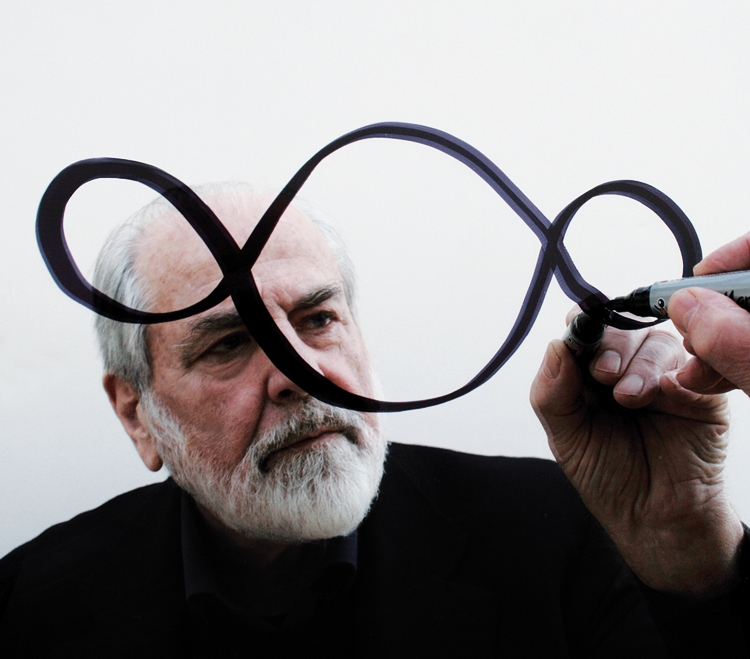
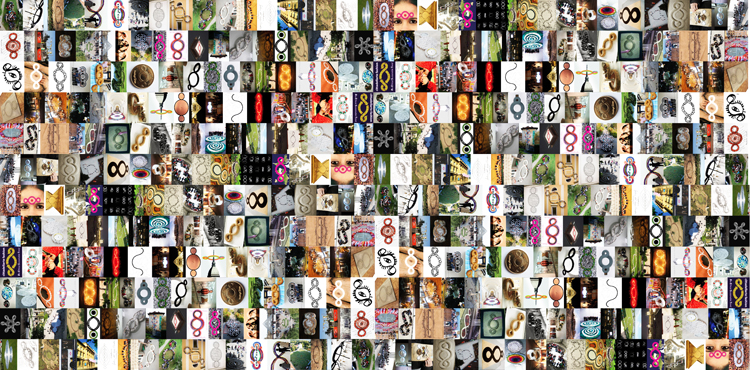 |
|
The Third Paradise, Wrapping Paper, freebie with “Lettura”, Corriere della Sera, 22nd December 2013 |
Over the last few years, some of your most significant artistic projects have featured renewable elements such as rice straw, used as a construction material, or wool (Woollen – The Reintegrated Apple, 2007). What are their functions?
“All my work starts from the symbolic value of the artistic experience. The work Wollen – The Reintegrated Apple has this function: it has been rejoined because the bite man took on the primordial fruit, a symbol of the aggression on nature and of today’s artificial world, has lead us astray. The underlying idea of Reintegrated Apple is that of regeneration. To go back to the title of Expo 2015, we have to nourish the body but also the mind of the planet and the function of art is to reconstruct a fabric of new symbols.
The Reintegrated Apple of Collezione Fondazione Zegna is made of wool, a regenerating material par excellence. It is a sheep’s dress, which is processed without forcing nature. In this way, man uses his artificial ability to create a totally new dress, in harmony with nature.
This underpins the notion of the three circles making up the Third Paradise, which I defined “trinamics”, the dynamics of number three, which brings back and melts together different elements to produce a new one, that did not exist before, able to strike a balance between the two opposites. This is a method we should adopt in every process: first we should look for the idea diametrically opposed to ours and then build a third completely new one.
In this way we go beyond recycling, we create something with a political, economic and social value.”
So what is the meaning of the Apple installation in Milan occurring at the same time as Expo2015?
“We have to go back to the land. The bitten apple in the Garden of Eden has today transformed into one totally devoured by the artificial world. Nature has disappeared. It is no longer just a religious symbol, if we think that Apple’s iconic symbol is a bitten apple. As the work that will be displayed in Milan intends to communicate, nature must be mended. It must be reintegrated.”
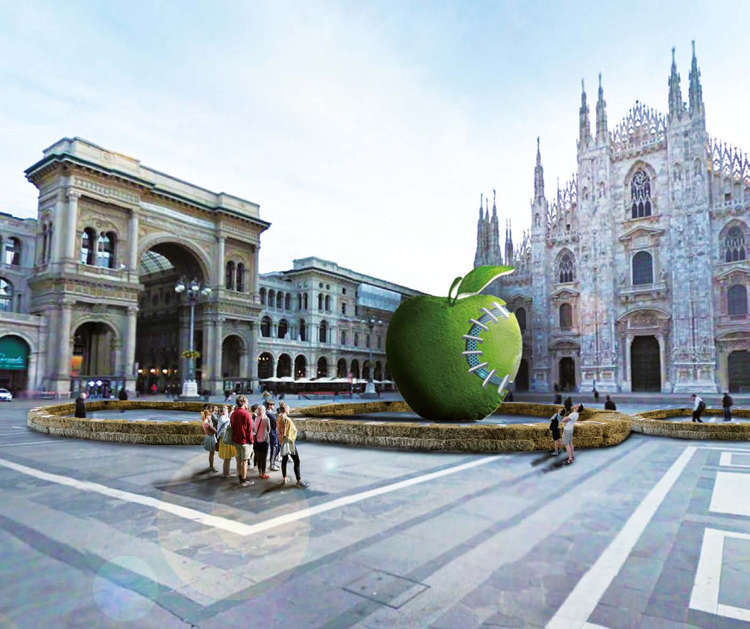 |
|
Michelangelo Pistoletto, Third Paradise – The Reintegrated Apple (Rendering), 2015, Palazzo Duomo, Milan |
The Third Paradise Manifesto by Michelangelo Pistoletto available at www.terzoparadiso.org/testi/terzo_paradiso.pdf


